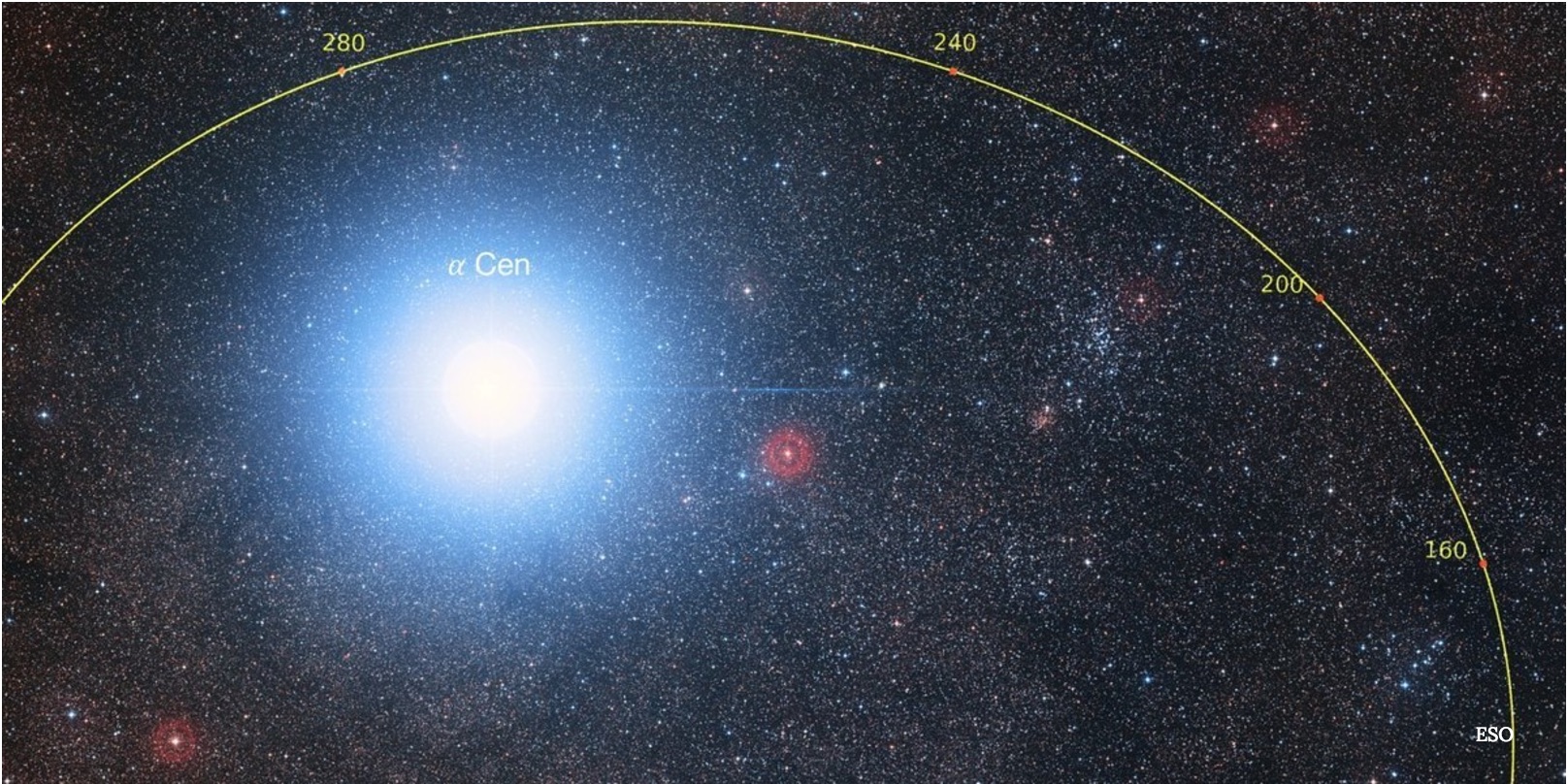Proxima Centauri's Origins Could Mean Its Exoplanet Really Is Habitable

After decades of uncertainty, it seems that astronomers may have found the strongest evidence yet that Proxima Centauri is indeed "gravitationally bound" to Alpha Centauri. This is interesting for many reasons, primarily because now we're pretty sure the Alpha Centauri system is a triple-star system, with two stars (Alpha Centauri A and B) orbiting closely and one oddball sibling (Proxima Centauri) with an extremely wide orbit.
But with the recent discovery of a small rocky exoplanet in orbit around Proxima, this new finding will boost hopes that this little world may be habitable for life as we know it.
Proxima Centauri is located around 4.25 light-years away making it the nearest star to Earth beyond our sun. The star's planet, called Proxima b, is approximately the same mass as Earth and orbits within the star's "habitable zone" — the region surrounding a star that's neither too hot or too cold for liquid water to exist on a planetary surface. Finding any planet within a star's habitable zone — regardless of the star's size or luminosity — will always be exciting as, if there is liquid water there, life could be possible. And discovering a (potentially) habitable world on our galactic doorstep is an incredible stroke of luck.
RELATED: Welcome to Proxima b, Our Nearest 'Earth-like' Neighbor
Though we know that Proxima b is there, we can only guess at its composition and have no clue whether or not it possesses any water. But new evidence suggesting Proxima Centauri is indeed a distant sibling of the Alpha Centauri could help us find out.
Proxima Centauri was only discovered a century ago and, since then, astronomers have been trying to understand its motion in the sky, a task that becomes very complicated when considering how dim it is. Red dwarfs are many times smaller and produce only a fraction of the light of our sun. But using the High Accuracy Radial velocity Planet Searcher (HARPS) instrument at the ESO's La Silla Observatory in Chile, astronomers have, for the first time, gained precision measurements of the dim star's radial velocity, a key metric if we are to understand if it is in any way related to Alpha Centauri.
The HARPS instrument is extremely sensitive to the wobble of stars as small exoplanets orbit around them, gravitationally tugging at them. Indeed, it was the HARPS instrument that discovered the tiny wobble of Proxima Centauri, revealing the presence of Proxima b. But this time, HARPS was able to deduce the velocity at which the tiny star is moving away from us and compared it with the radial velocity of Alpha Centauri. Both radial velocities closely match, which means that, in all likelihood, Proxima Centauri has a wide orbit around Alpha Centauri. They are therefore, probably, gravitationally bound.
Get the Space.com Newsletter
Breaking space news, the latest updates on rocket launches, skywatching events and more!
RELATED: Proxima Centauri Is Like Our Sun... on Steroids
Though this is a significant find — indeed, the question of whether or not all three stars are in orbit around one another has been vexing astronomers since Proxima Centauri was first spotted — it could reveal an interesting tidbit about the nature of Proxima b itself.
If Proxima Centauri and Alpha Centauri are gravitationally bound, this gives us a clue that the group formed from the same star-forming nebula billions of years ago. They are all therefore the same age. Over time, the trio's orbits evolved and Proxima Centauri for some reason was thrown away from the Alpha Centauri binary. In research to be published in the journal Astronomy & Astrophysics, the researchers speculate that before Proxima Centauri was ejected and sent on the lonely orbit it's in today, a planet formed far from the star and then migrated to a lower orbit. As it occupied such a distant (and cold) orbit, it would have likely been an icy world and that ice could have been water. And now Proxima b is orbiting in a very habitable location for liquid water to exist on its surface, then perhaps — just perhaps — it possesses water to this day.
Though it's a bit of a reach to be making any assumptions about the water content of a planet we cannot directly see, it's interesting to think that Proxima b may have formed with an abundance of water ice and it's hard not to get excited for the artistic renderings of alien oceans under a red sun.
RELATED: Proxima B: Another Earth Just Next Door
Originally published on Seeker.
Join our Space Forums to keep talking space on the latest missions, night sky and more! And if you have a news tip, correction or comment, let us know at: community@space.com.
Ian O'Neill is a media relations specialist at NASA's Jet Propulsion Laboratory (JPL) in Southern California. Prior to joining JPL, he served as editor for the Astronomical Society of the Pacific‘s Mercury magazine and Mercury Online and contributed articles to a number of other publications, including Space.com, Space.com, Live Science, HISTORY.com, Scientific American. Ian holds a Ph.D in solar physics and a master's degree in planetary and space physics.
